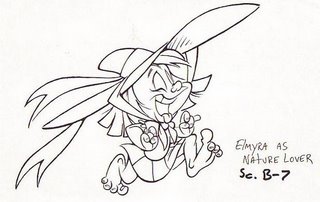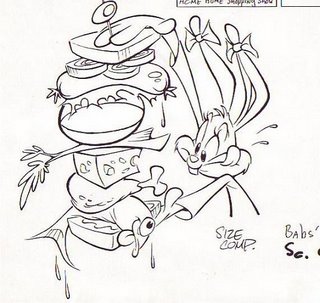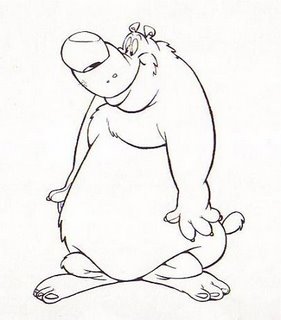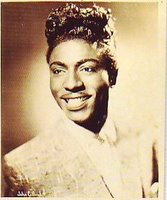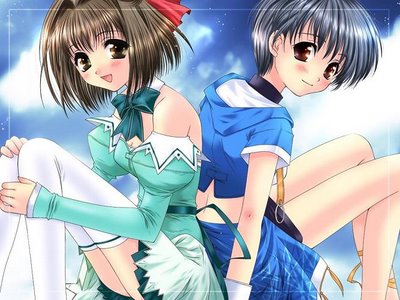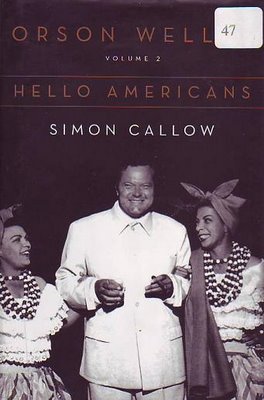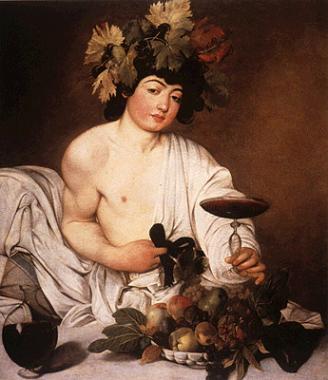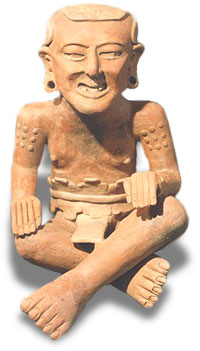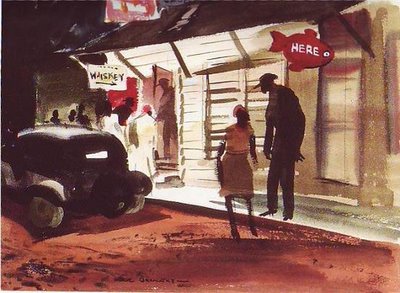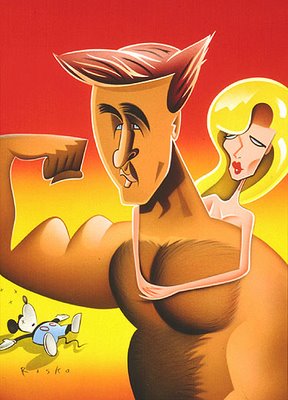
Has everyone here seen John Kricfausi's latest (or nearly the latest) blog entry about his artistic influences? If you haven't then you missed the mother of all animation posts. I predict that copies of that article will be passed around for decades, it's that good!
Of course John discussed his own influences as a way of opening up a wider subject, namely the need for more diversity in animated comedy styles. It seems like all the good draughtsmen are doing Disney, Cartoon Network, Chuck Jones or Spumco. Some artists are doing independent styles but even those tend to fall into two or three catagories. This is very odd because the history of comics and cartoons is so much more diverse than that. Think about Don Martin, Milt Gross, the Fleischers, Jim Tyre, Rod Scribner, Chester Gould, Al Capp, Bakshi, Barney Google, Seuss, Natwick, Iwerks, Plastic Man, Ding Darling, classic kids books...well it would be a long list. The point is that cartooning is beginning to feel narrow and claustrophobic.
I don't know about you but I can't express myself with (for example) Don Bluth-type characters. I'm not knocking Bluth, I have a lot of respect for the guy, but characters drawn that way reflect his life experience, not mine. I grew up feeling a lot of economic insecurity, a lot of lust for women and a real desire to understand the world. Don Martin 's style speaks to me about economic insecurity, Tex & John speak to me about lust, and Clampett, Scribner, Wood, John, the Fleischers and some of the most innovative aspects of Disney speak to me about about exploring the possibility of things. That's the mix that feels right for someone with my background. Someone who grew up differently would have a different set of influences. Why are we both doing Don Bluth's style?
And how about Cartoon Network's style? It's a fine style for humor about nerds and their hip suburban friends. I wish the studio well and have only good feelings about it but I never considered myself a nerd and I'm not really hip...I'm more of a hip wannabe. A big part of my life and comedy experience could never be made to fit into the nerd/hip nexus. I can't express myself in nerdhip. I don't think in those terms.
A lot of classic comedy doesn't reduce to nerd/hip. Jackie Gleason, Sid Caesar, Kovaks, Jack Benny, Chaplin, Clampett Tex and John all did comedy about other things. Me, I think it's funny when you're sitting next to a beautiful girl and her big, mean bruiser of a boyfriend and she's coming on to you to make him jealous. It's funny when you're the only guy without a sandwich at a business meeting and someone's inadvertantly waving their pickle under your nose. It's funny when Moe thinks Larry and Curly are stupid when he's really just as stupid as they are. It's funny when Daffy imitates Danny Kaye or compulsively talks to Elmer when Elmer's trying to sleep. What does any of this have to do with nerd/hip? Where did this one-size-fits-all compulsion come from?
BTW, the caricature above is actually of Alex Baldwin but it looks like John, doesn't it?
 I'm kinda busy tonight so I'll have to put up Mike's pictures tomorrow. I think you'll find it worth the wait. Meanwhile here's some Uncle Eddie photos taken in the backyard of my first house. John needed some pictures so he could try to sell me to TV as a cartoon show host.
I'm kinda busy tonight so I'll have to put up Mike's pictures tomorrow. I think you'll find it worth the wait. Meanwhile here's some Uncle Eddie photos taken in the backyard of my first house. John needed some pictures so he could try to sell me to TV as a cartoon show host. 







